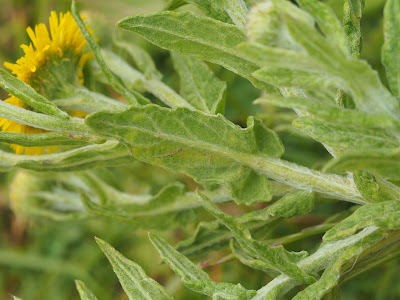Common name: Common Fleabane
Scientific name: Pulicaria dysenterica 止痢蚤草、普通蚤草、草地假蚤草
Genus: Pulicaria 蚤草屬
Family: Asteraceae or Compositae 菊科, aster , daisy, composite or sunflower family
Remarks*: Fleabane's common name comes from its former use as an incense to drive away insects. From the scientific name of this plant you may guess (quite correctly) that it was used in the past as a treatment for dysentery. Its common name suggests another use of fleabane: to repel fleas.
Origin: Native.
Date: 16th July
223 An erect, stoloniferous, sparsely hairy, clump-forming perennial, can reach up to 60cm.
234 Stem leaves cordate, clasping.
230 Underside of the leaves hairy.
227
226 Ray florets (yellow) much longer than involucral bracts (green).
228 Flower head not yet bloom.
















No comments:
Post a Comment